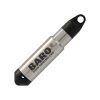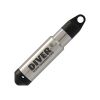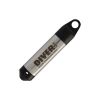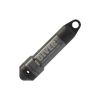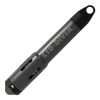Van Essen Diver Smart Interface Cable
Features
- Real-time atmospheric pressure measurement
- Informational indicators: ready, sending data, receiving data
- Warning indicators: Diver not connected/communicating, cable malfunctioning
- Free ground shipping
- Expedited repair and warranty service
- Lifetime technical support
- More
Overview
The Van Essen Diver Smart Interface Cable is a communication device to link the Divers deployed on a communication cable (DXT or DDC) to a PC, laptop and/or tablet. Simply plug the Smart Interface Cable in an available USB port of the computer and connect the other end to the communication cable. The deployed Diver can now be accessed using the free Diver-Office software. Once connected, the Diver can be programmed, settings read, or data downloaded.
Design
The Smart Interface Cable features a barometric sensor that allows for real-time comparison of Diver readings and manual measurements. After connecting the Smart Interface Cable, the Diver can be returned to its original position in the well with the supplied Suspension Plate. The Smart Interface Cable features indicators for sensing if a cable is connected, a Diver is connected to the communication cable or if the communication cable is malfunctioning.
Applications
The Smart Interface Cable can be used for communication cables from 1 meter up to 500 meters in length. The Smart Interface Cable is designed to be used in the field and supports all Divers.
Note: Diver-Office 2017.2 or later must be installed to be able to communicate to the Diver through the Diver Smart Interface Cable.
- (1) Diver Smart Interface Cable
- (1) Suspension plate
In The News
Lancaster County Makes the Switch to Real-Time Water Quality Monitoring Systems
Continuous data collection in Lancaster County, Pennsylvania, started about 5 years ago, and the county will be making a major upgrade over the next year—switching from relying solely on the internal storage of water quality sondes to telemetry units that enable real-time data viewing. [caption id="attachment_39295" align="alignnone" width="940"] The first telemetry unit was installed at LCCD along Little Conestoga Creek. (Credit: Tyler Keefer / LCCD) [/caption] Telling Lancaster County's Story Through Data Since the Lancaster County Conservation District started monitoring county waterways, the goal has remained the same, according to Amanda Goldsmith, Watershed Specialist for the Watershed Department.
Read MoreFrom Florida to the World: How a Smithsonian Research Station is Bridging Gaps in Marine Biology
In the early 2000s, along the coast of northern California, where the redwoods dominate the forests, and the Pacific Ocean shapes shorelines, a Humboldt University undergraduate student took the first steps into a lifelong love of marine biology. Dean Janiak accepted an invitation to help a graduate student with fieldwork in rocky coastal tide pools, and so began a journey that led him from California to Connecticut to Florida and eventually to the world, where he has facilitated research in communities across the globe. While finishing up his masters of Oceanography from the University of Connecticut, Janiak continued researching fouling communities–marine life that live on hard, often artificial surfaces such as docks–at the Smithsonian Environmental Research Center.
Read MoreWatershed Stewardship in Minnesota: Protecting Valley Creek in the Land of 10,000 Lakes
The Saint Croix Watershed is home to dozens of lakes, rivers, and streams that host an abundance of aquatic life from its tributaries. Valley Creek, a tributary of the St. Croix River, is a designated trout stream and while it is a pristine waterway, ongoing monitoring and stewardship establish a baseline of conditions and protect the creek. Don Wendel and Dllona Clendenen, Minnesota Master Naturalists, Liberal Arts majors, and retired college teachers, are two members of the wetlands research team based out of the Science Museum of Minnesota’s St. Croix Watershed Research Station that monitors Valley Creek throughout the year.
Read More




